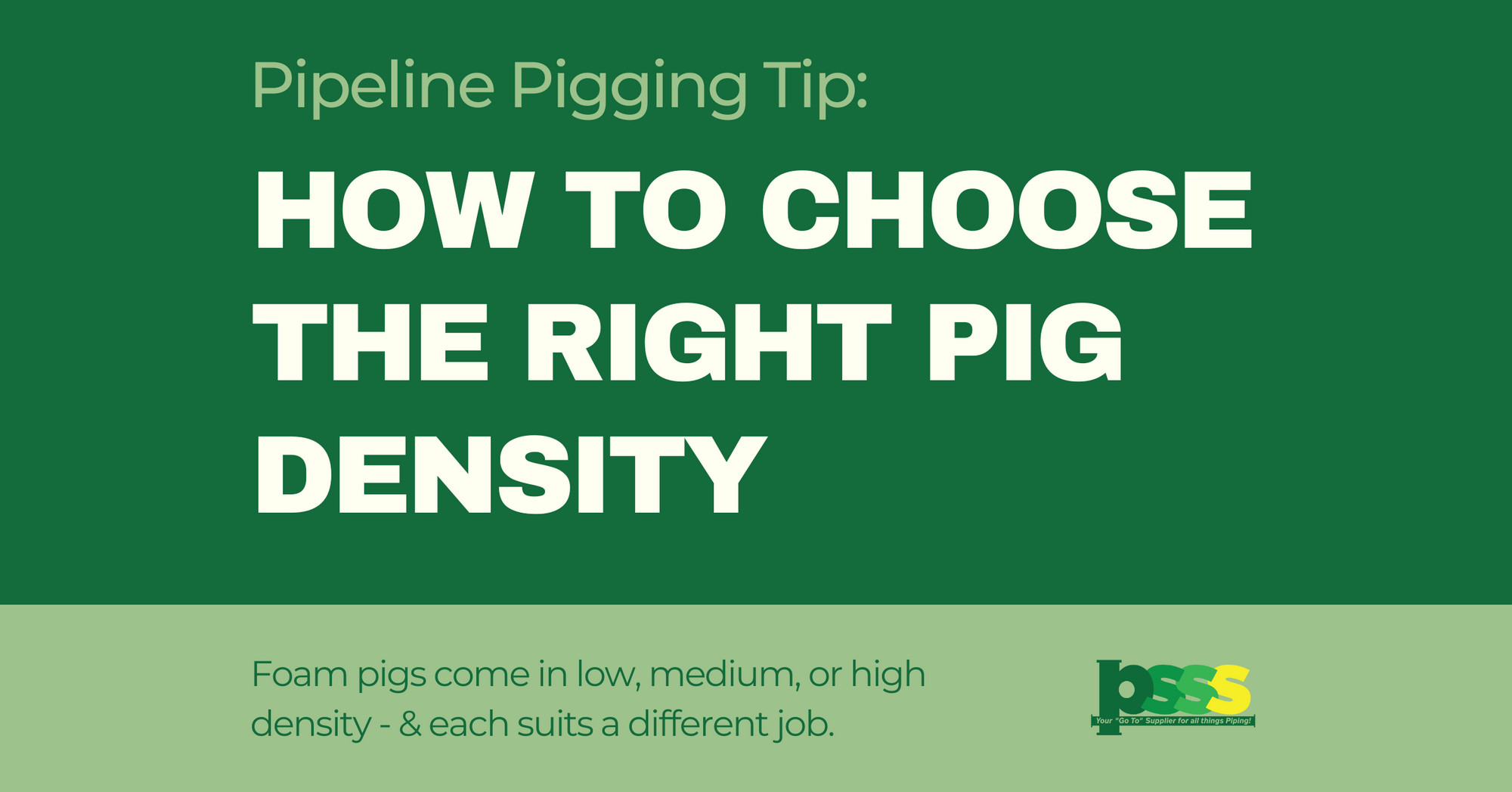When it comes to pipeline pigs, density matters. The type of foam pig you choose can impact everything from cleaning performance to flow efficiency - and picking the wrong one could mean reduced effectiveness or even damage to your system.
At PSSS, we stock a wide range of foam pigs across different densities and coatings to suit everything from light-duty cleaning to aggressive scraping. Here’s what you need to know about choosing the right density for the job.
What Does Pig Density Mean?
In simple terms, pig density refers to how dense or firm the foam material is. It’s typically classified as:
-
Low Density - soft and flexible
-
Medium Density - balanced firmness
-
High Density - rigid and abrasive
Each is designed for a different purpose, depending on your pipeline’s contents, condition, and what you’re trying to achieve.
When to Use Low Density Foam Pigs
Best for:
- Dewatering
- Drying
- Light cleaning
- Navigating tight bends or diameter changes
Low density pigs are lightweight and highly flexible, making them ideal for delicate or complex pipelines. Their soft structure helps minimise friction and bypass, especially useful after hydrostatic testing or during commissioning.
Example: Use a low density pig when drying a newly installed water pipeline with multiple bends.
When to Use Medium Density Foam Pigs
Best for:
- Routine maintenance
- Product batching
- Moderate cleaning
- Pipelines with light debris or wax buildup
Medium density pigs offer a balance between flexibility and firmness. They're a go-to for general purpose pigging and often feature coatings like criss-cross polyurethane or wire brush inserts to improve cleaning capability.
Tip: Our criss-cross coated and wire brush foam pigs are popular medium density options that add light abrasion without being too aggressive.
When to Use High Density Foam Pigs
Best for:
- Heavy-duty cleaning
- Removing tough deposits (e.g. scale, rust, hardened wax)
- Preparing pipelines for inspection
High density pigs are rigid and durable, often used with abrasive coatings or embedded wire. While they offer powerful cleaning action, they’re best suited to pipelines in good condition with minimal internal coating concerns.
Caution: Avoid high density pigs in lined pipelines or systems with delicate coatings - they may cause damage.
Coatings Matter Too
Density is just one part of the equation. Foam pigs can also come coated or uncoated, with options like:
-
Bare foam - basic, low-friction pig
-
Criss-cross polyurethane coating - adds abrasion and durability
-
Wire brush coating - improves scraping for stubborn contaminants
-
Total wire pigs - maximum cleaning strength for heavy buildup
You can browse our full pig range here:
View Pipeline Pig Products
Not Sure Which Pig to Choose?
You don’t have to guess. At PSSS, we’ll match the pig to your pipeline size, material, and application. Just let us know your system specs and goals, and we’ll recommend the best option.
Contact us or give us a call today.

